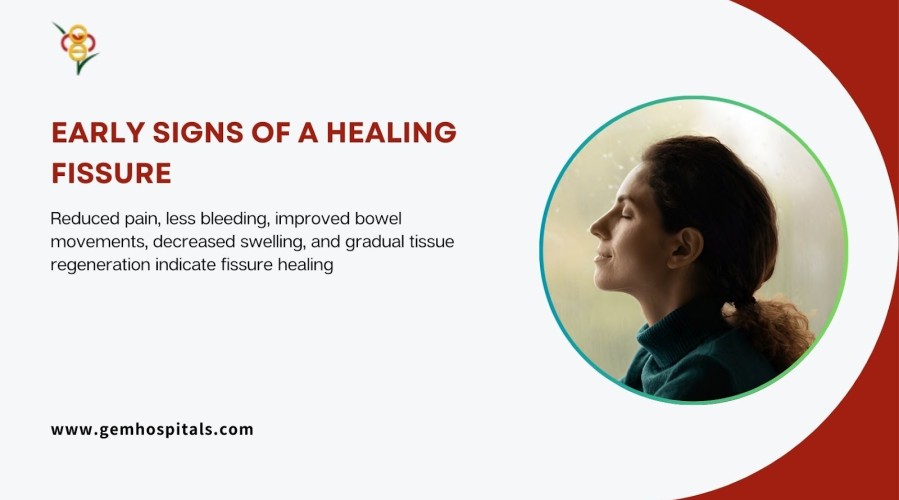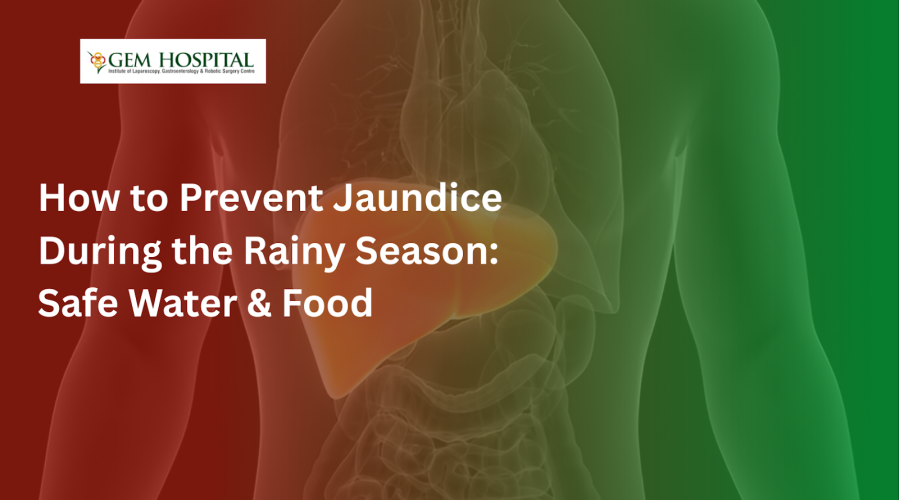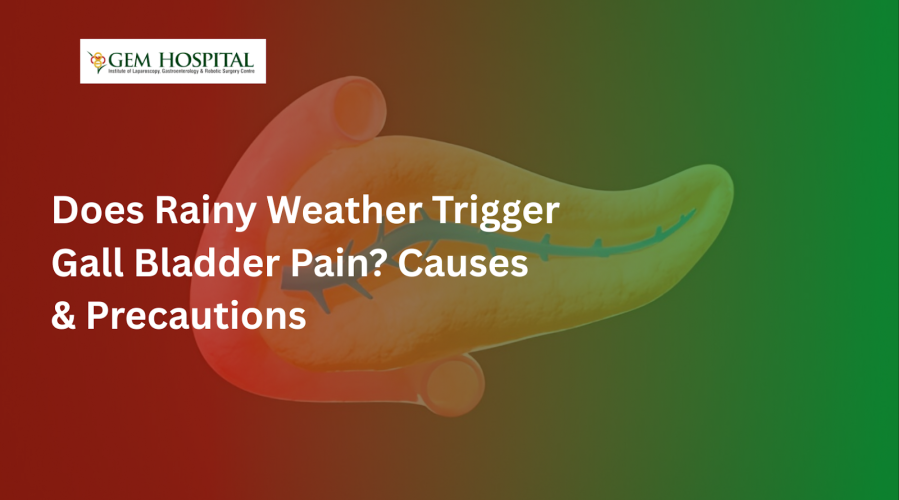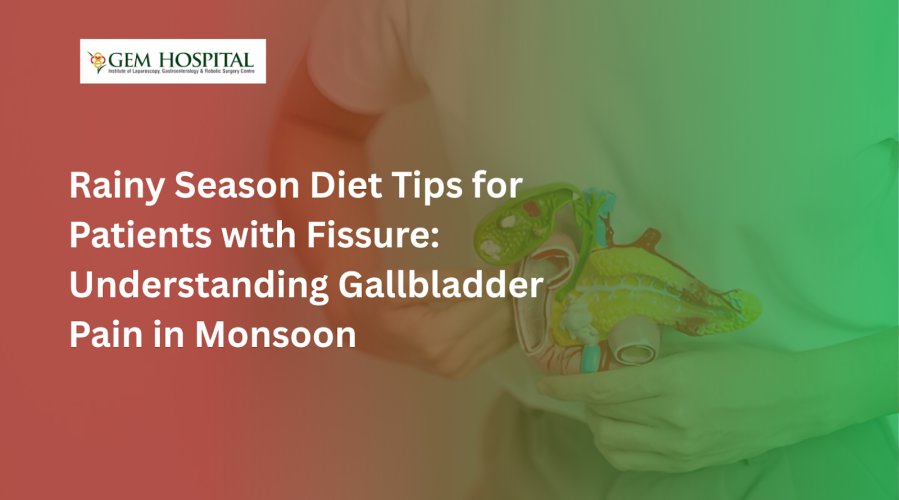Learn how to prevent jaundice during the rainy season with simple safe water practices and healthy food habits. Discover key hygiene measures, diet precautions, and monsoon safety tips to protect your liver and overall health.
Early Signs of a Healing Fissure

Anal fissures refer to small injuries in the mucosa of the anus which can lead to a great deal of pain. Most of them are tender and could limit your activities, but the encouraging aspect is that most fissures resolve on their own once treated correctly. Knowing what kind of changes to expect also helps to keep you focused and encouraged when things seem hard and you are tempted to quit. In this blog, you will read about the signs of a healing crack and some recommendations on how to speed up the process.
What Causes an Anal Fissure?
Anal fissures develop for various causes mostly due to pressure or irritation in the anal region. Some common causes include:
- Constipation and Hard Stools: Trying to defecate large or hard stools may cause the tissue around the rectum to tear.
- Chronic Diarrhoea: Loose motions often cause inflammation of the anal lining which makes the development of fissures easier.
- Trauma or Injury: This may happen during delivery of a baby, lifting a heavy object or using certain medical equipment inappropriately.
- Poor Diet: The absence of fibre in the diet implies that the patient is bound to suffer from constipation – a major cause of fissures.
- Underlying Medical Conditions: Other causes include Crohn’s disease, infections, or any other disease that can cause poor circulation in the area.
When you address the source, you can set the groundwork for recovery.
Early Signs of a Healing Fissure
Anal fissure healing is not an overnight process but there are signals that show that the wound is healing. Here are the key markers to look for:
1. Reduced Pain
The most typical sign of an anal fissure is experiencing pain when defecating. When the process of healing starts, the pain will reduce in both its severity and the number of times it occurs. It is possible to feel that constipation is less painful and that the stinging or burning feeling decreases as the day progresses. It is usually one of the earliest signs that the rift is beginning to close.
2. Decreased Bleeding
During the initial period of a fissure, most individuals experience passing of blood either in the feces or on the tissue paper. When the crack is healing the blood clotting reduces. You might find that there is less bleeding or there is no bleeding at all. This decrease is an indication that the torn tissue is healing and actually gaining in strength.
3. Less Swelling or Irritation
Inflammation and redness around the anus are also characteristic of a fissure. These symptoms start to reduce as the healing process advances. You may experience decreased sensation or redness and the area may begin to fade and look more natural.
4. Improved Bowel Movements
Hard and strained bowel movements further worsen the fissures hence easier bowel movements are an indication of improvement. Bowel movements that are softer, smoother, and pass without difficulty mean that your dietary and fluid modifications, or medications, are helpful for the body’s recovery.
5. Healing Skin Tissue
Even where you cannot observe the fissure, it is the process of tissue regeneration of the torn tissue. When the skin is healing, the body produces fresh skin and covers the tear with it. This process helps to decrease symptoms like pain and itching to prove that the area is healing.
6. Decrease in Itching or Burning Sensation
Soreness, or stinging is usually a manifestation of inflammation and as the fissure begins to heal such symptoms disappear. Less of these symptoms imply that the given area is less inflamed and is in the process of healing or stabilizing.
Factors That Support Healing
While your body is naturally equipped to heal fissures, there are steps you can take to support and speed up the process:
- Stay Hydrated: Consuming lots of water helps to make the stool loose hence less pressure when passing stools. The recommended amount is 8 glasses per day.
- Eat Fibre-Rich Foods: Fruits, vegetables, whole grain products, and legumes ensure that the bowels are working properly and not constipated.
- Use Medications: Sometimes, creams purchased from a store or medications prescribed by a doctor, including nitroglycerin, or painkillers, can help with the pain and recovery.
- Take Sitz Baths: Anal area should be washed in warm water several times a day in order to help in diminishing the pain and increasing the blood flow in the area.
- Avoid Straining: Do not attempt to defecate again because this will cause the fissure to open and heal takes longer.
- Practice Good Hygiene: Do not let the area become infected or irritated more by washing it and keeping it dry.
When to Seek Medical Attention
Most anal fissures are self-limiting and resolve within 2–6 weeks; however, some may recur or may need more attention. It’s important to see a doctor if:
- Your pain or bleeding is still present after two to three weeks of home management.
- You develop symptoms of infection including fever, inflammation or presence of pus.
- The fissure is a relapse or becomes a chronic problem.
In severe cases, the doctors may prescribe Botox injections, dilation procedures or even minor surgery to treat the fissures. If you take action at the first sign of a problem, you can prevent these complications and get well soon.
Tips to Promote Faster Healing
Here are a few extra steps you can take to encourage faster healing and prevent future fissures:
- Follow a Balanced Diet: Try to take more of high fibre food stuffs in your diets so as to enable proper digestion of foods in your body. Avoid foods that may cause irritation of the anal region such as spicy foods, acidic foods and processed foods.
- Exercise Regularly: Prolonged sitting can negatively affect circulation and bowel movement hence the need to take a walk gently.
- Minimize Stress: It also affects the digestion process and bowel movement; you should try to relax during work through deep breathing or meditation.
- Stick to Your Treatment Plan: Whether it is a prescription cream for the wound or change in the diet, regularity is the word for healing.
It is a slow process to heal an anal fissure but if you identify the early signs that include less pain, less bleeding and better bowel movement, then you can be sure that you are on the right track. Of course, it is crucial to understand that such minor changes as drinking water, consuming fibre-rich food products, washing your hands, and so on can also impact your recovery.
That is why in case your symptoms do not seem to improve or you are unsure of what has changed with your condition, it is best to seek help from a professional. At GEM Hospital we have specialized in treatments of fissures and other related conditions.
Don’t let the pain go on any longer – call to schedule your appointment today.
Blogs & Article
Understand why rainy weather may trigger gall bladder pain. Explore the causes, symptoms, and essential precautions to manage discomfort during monsoon season. Learn how humidity, diet changes, and infections influence gallbladder health.
Discover essential rainy season diet tips for patients with fissures and understand why gallbladder pain increases during the monsoon. Learn what foods to avoid, what to include, and how to maintain digestive health in humid weather.


